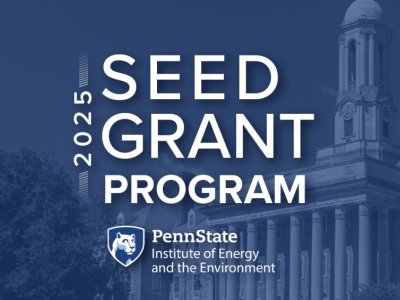
This seed proposal describes a one-year plan to demonstrate nanoscale structure control over electronic spin properties in metallic catalysts. Our interdisciplinary team, which includes members from the Eberly College of Science, the College of Engineering, and the College of Earth and Mineral Sciences, will leverage the results from this work to compete for large external funding.
For example, this work is motivated, in part, by recent research from Air Force Research Laboratory scientists that highlights the importance of electronic spin states in the metal- and metal oxide-catalyzed reduction of CO₂. Many of the efforts described in this seed proposal have been developed in consultation with Air Force Office of Scientific Research and National Science Foundation program managers.
Our proposed objectives are to understand how nanoscale structural control can be used to:
- Increase spin lifetimes
- Selectively induce spin polarization in catalytically active metals
- Control spin transfer efficiency between sites in multi-component materials
Our proposal leverages structural control spanning molecular to wafer length scales—platforms for which we have already made steady-state spin polarization and catalytic measurements. The seed funding will allow us to extend this work to the time domain through the upgrade of a time-correlated single-photon counting unit, which is essential for kinetic measurements and for the study of spin-polarized energy transfer and spin lifetimes. This time-domain component will enhance our team’s ability to compete for external grants.
This work will also promote the education and professional development of Penn State graduate students in a collaborative and interdisciplinary environment. The seed project is synergistic with many IEE themes. Mechanistic understandings of metal catalysts and photocatalysts will impact renewable energy technologies and, in the case of CO₂ reduction, lead to cleaner air and reduced climate change. As such, the results align well with the Integrated Energy Systems, Climate and Natural Systems, and Health and the Environment research themes of IEE.




